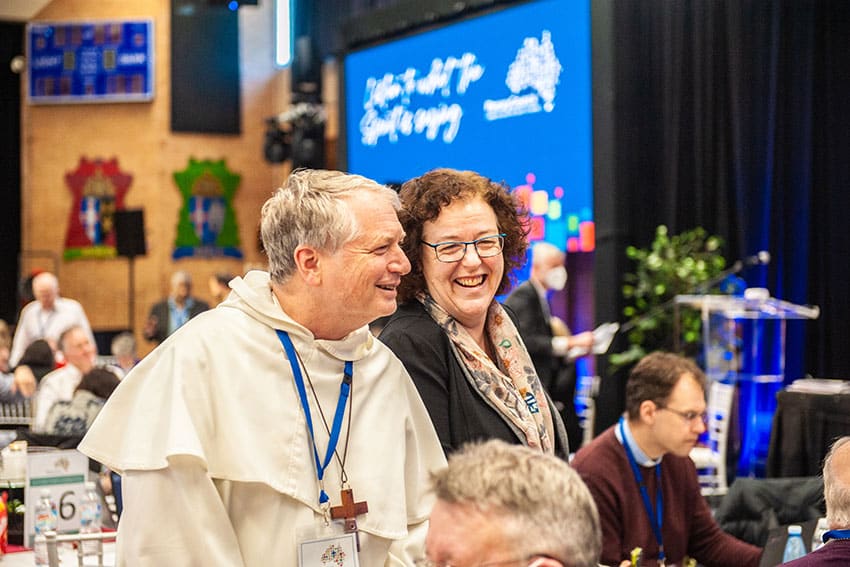
Cautious optimism
As the four year process of the Fifth Plenary Council of Australia comes to an end, there have been both positives and negatives, Archbishop Anthony Fisher OP of Sydney said in an interview on its final day.
He said he was cautiously optimistic about its achievements.
“There’s been a direct engagement with some of the really ‘hard’ issues, like Indigenous issues, child sexual abuse and the place of women in the Church,” he told The Catholic Weekly newspaper. “Those discussions were sometimes very emotional and potentially very divisive. Yet in the end there was a high level of agreement on most of them.
“It’s much better that such matters were confronted directly rather than presenting a kind of faux unity by avoiding the hard issues,” he said.

A challenging process
“The assembly has offered some good thoughts on liturgy, marriage catechumenate, youth ministry, formation programs for lay leaders including those in rural and remote areas, and stewardship of the earth.”
Other positives included a much greater appreciation of the place of the Eastern Catholic churches in Australia than has been seen in Church gatherings before now.
It was always going to be difficult to hear, distill and then do justice to contributions from near a quarter of a million people down to two one-week assemblies and the processes in-between. And underrepresentation of ‘ordinary’ priests and indeed ordinary Catholics , including overseas-born ones, was also potentially distorting according to Archbishop Fisher.

Holding together
“Yet in the end, by God’s grace, the centre held.” Here the Archbishop was adverting to divisions that threatened to splinter the assembly, such as the protest by 60 or so members on Wednesday 6 July over failed motions on women and the Church.
“Much has been made of the division and drama of the week and that might frighten some and delight others. But I think the remarkable thing is that it did not break the Church. It did not lead to a walkout or schism or an alternative assembly being set up down the road as we’ve seen at different times in history,” he said.
“In the end with more prayer and reflection we ended up with a much improved chapter on the dignity and roles of women, and while some proposals on other matters failed to receive the necessary support to go forward, others were adopted, texts were revised, and most matters received a very high rate of acceptance among the lay members and the pastors. The Holy Spirit was evidently active in all this.”
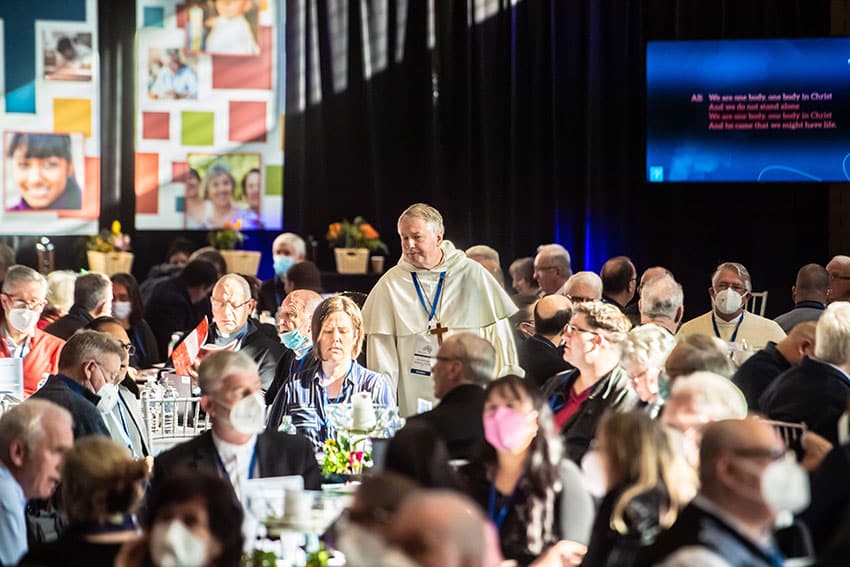
Good will overcomes – something for everyone …
The years of process and the past week of assembly had demonstrated that with good will and discerning hearts there can be positive outcomes even when dealing with controversial issues.
“There’s something in the idea of creative tension, at times greater wisdom comes from openly discussing issues rather than papering over the cracks. Sometimes it’s important to surface these things and deal with them openly and respectfully,” he said.
And while not everyone would agree on the Plenary’s final resolutions, there was something for everyone, he said.
“Everyone will find some good things in the final decrees when they come out, and people should look for those, look for inspiration and encouragement in their own missionary discipleship.”

… but gaps as well
However it was to be expected that people will also identify gaps. The Archbishop said he had been personally disappointed that certain issues got little or no attention at the Plenary.
“So much attention has been given to ‘governance’ and the role of women in church governance and ministry,” he said. “But where are lay men in all of this, or mothers, or religious women and men, or Catholics whose principal vocation is in the world? All these are almost completely absent from the resolutions. There’s very little that speaks to the crisis of vocations to marriage and parenting, and to priestly and religious life.
“We have a whole chapter on the importance of the liturgy especially the Eucharist and Penance. Yet there are no positive proposals about how we will get the priests we need to celebrate those sacraments. Meanwhile fewer and fewer people availing themselves of those sacraments because of the decline of faith, affiliation and practice in Australia. If we don’t address this head-on with a major focus on evangelisation, we could end up with fine governance structures and imaginative liturgies but an empty church.”
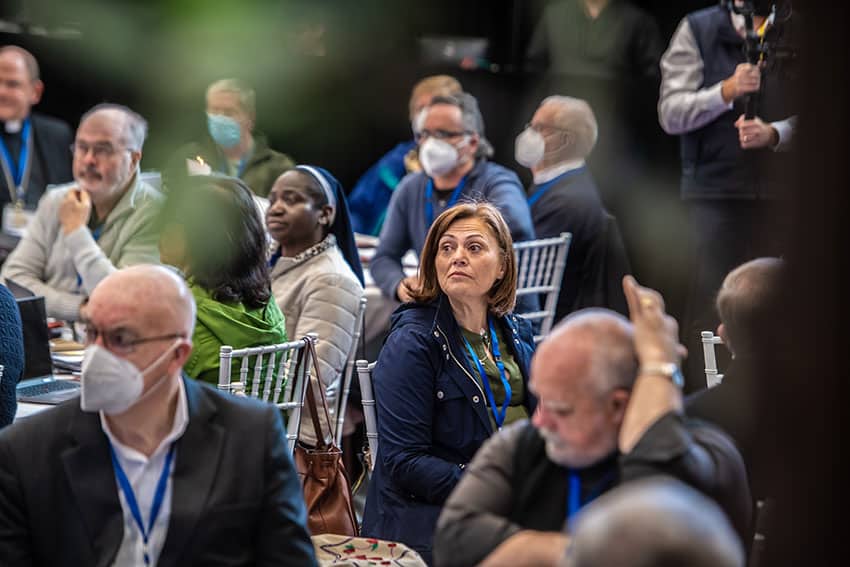
Mystifying absences
Archbishop Fisher said he was mystified why, try as Plenary Council members might to get such issues considered, they had not made it to the Plenary agenda.
“There was not enough in terms of what Pope Francis calls ‘missionary impulse‘, a passion for bringing people to Christ, to conversion and new life in Him. There was too little attention to the invisible people – the pregnant, unborn, refugees, trafficked, mentally ill, dying and the poor. And there were no practical proposals for promoting religious freedom at a time when it is clearly threatened,” he said.
He said some flaws in the Plenary process had become evident throughout the week of its deliberations while others had emerged over the four years of the process leading up to the Second Assembly.

Time problems
“I think that just this week we’ve often found ourselves really hammered by time constraints and unable to give the attention or to allow as many interventions or amendments as the issues merited and the members deserved,” he said, noting that by the same token gatherings cannot go on indefinitely and the assembly was in fact run very efficiently.
“The assembly was structured in a way that created pressure upon the ‘determinative voters’—mostly bishops—to vote along the same lines as the other members (the ‘consultative voters’) in order to show they’d listened to the people. And there were other pressures from some of the members who were quite ideological and outspoken,” he said.
“I think we are clearly in a very different world to that of the previous Plenary Councils, where the bishops were seen as undisputedly the leaders of the Church and it was their task as pastors to decide the pastoral direction of the Church. This Plenary was very much set up so the bishops would listen and enact what others thought were the pastoral priorities.”
He said this was partly influenced by the spirit of the age and partly by developments in Church thinking.
“There’s a very different attitude to authority, leadership and hierarchy today – partly due to the spirit of the age which reduces truth to popular opinion, and partly due to the synodality movement which has called the pastors of the Church to listen to their people and discern alongside them rather than above them. So I would say some of this has come from the heart of the Church and some of it is coming from other places that are not so healthy.”
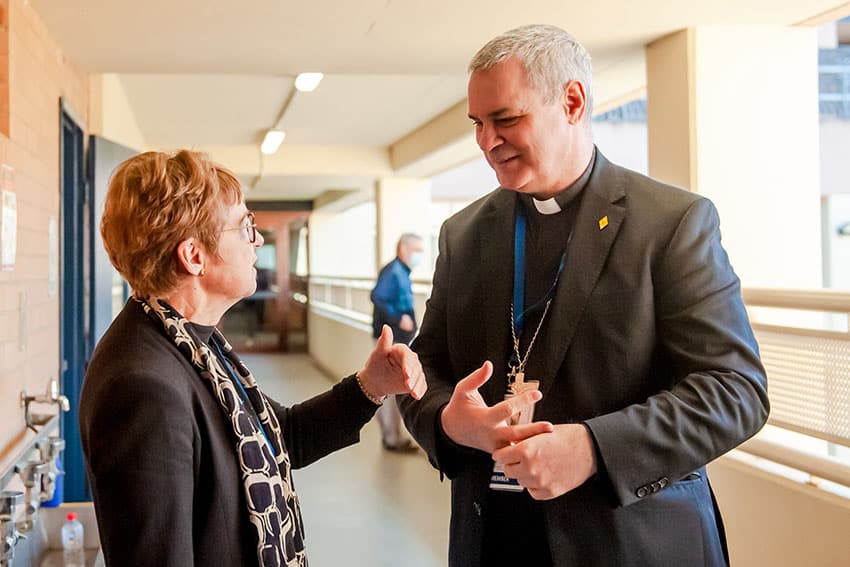
What synodality is not
However, he pointed out, Pope Francis has repeatedly warned that synodality is not about secular models of “governance”.
“The Pope insists it’s not about opinion polls, parliamentary blocs and ’horse-trading’ to get your own way. The risk is that in our age that’s exactly the mindset people bring to a consultative process.”
Meanwhile, the Archbishop said he was disappointed that the concerns expressed in the Vatican’s response to the 2020 Light from the Southern Cross report had not yet been made public. The report, which recommended far-reaching changes to Church governance in Australia, has been extensively quoted since its release and was widely cited as authoritative in the Plenary proceedings.
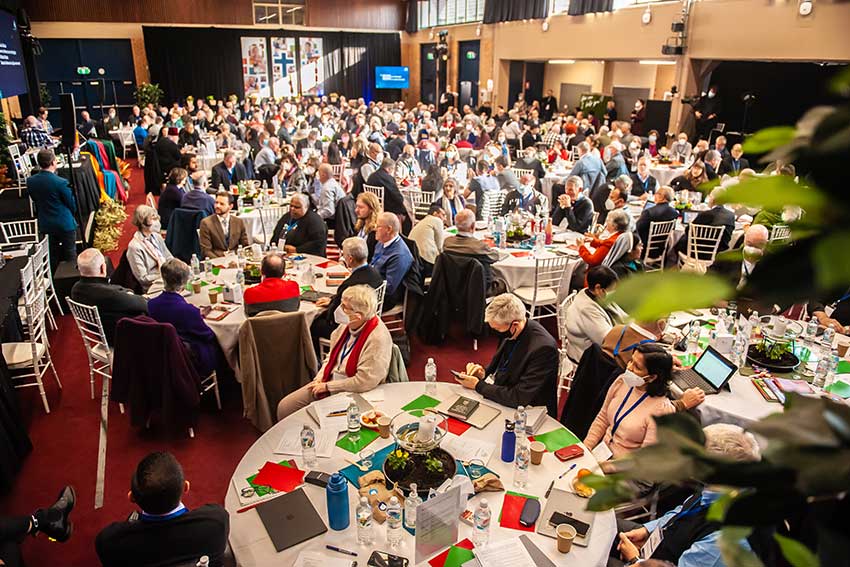
Vatican concerns
That this report is given such weight by some despite the “shenanigans” around its publication and the critiques from the Holy See is “strange”, Archbishop Fisher said.
“Having received this critique of the ecclesiology underlying the report, I would have expected much greater caution about seeking to implement it at the Plenary Council. But there was no hint given that there are some serious concerns about it and that could be misleading for people.”
Overall, the Archbishop was positive about the Plenary Council, saying it had done some good work and demonstrated the power of the Catholic faith and divine grace to unite people of very diverse temperaments, backgrounds and theologies. He prayed that the Church in Australia would emerge from the Plenary Council “driven by the Holy Spirit, as Jesus was driven into the desert and emerged on fire for preaching repentance, proclaiming the Gospel, and building the kingdom of God.”
The Plenary concluded with a closing Mass at St Mary’s Cathedral in Sydney on 9 July with the finalisation of its decrees set for August 2022.
Related
